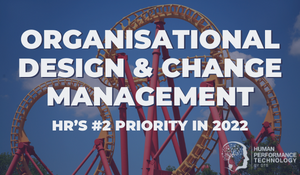In a Nutshell: 8-Step Change Model (Kotter)
“Leading Change” (1995) is a seminal work in the field of organisational change and leadership by Harvard Business School professor John Kotter. It is considered by many to be a must read for anyone involved in change management.Before writing the landmark book, Kotter had been involved in a 10-year study of more than 100 companies that had attempted some kind of important change effort. The results were surprising. Kotter reported the statistic that 70% of change initiatives in businesses fail. Whether it was on a large scale involving a merger or on a small scale involving the implementation of a new performance management system, in every case change required the support of many people in order to succeed, but usually failed to achieve the necessary commitment.
Kotter wrote about his findings in an article for Harvard Business Review in 1994 titled “Leading Change: Why Transformation Efforts Fail,” which quickly became one of their most popular articles of all time. Encouraged by the initial response, Kotter began work on a book by the same name shortly thereafter.
“Leading Change” presents the full results of his observations and research, outlining the 8 biggest errors that can derail a change effort. It is also considered to be an especially important work on leadership because the engine that ultimately drives change is leadership, not management. The advice is primarily directed at those in senior positions where they would have the most influence on a change strategy, but the lessons and case studies presented in the book offer valuable lessons that anyone can benefit from.
Overview:
John Kotter’s 8-Step Change Model suggests that there are 8 sequential steps that must be followed in order and executed well to ensure the success of any organisational change effort.
Step 1: Create Urgency
The biggest mistake in change management is to move ahead without first gaining buy-in from managers and employees. Leaders often underestimate how hard it is to get people to move out of their comfort zones. Complacency is the real enemy of change. The only way to overcome inertia is to win people over and have them see the true need for change. Regardless of incentives or threats, people’s commitment cannot be bought. The leader must appeal to people’s hearts, not just their heads.
Step 2: Form a Powerful Coalition
If the head of the organisation isn’t an active supporter of the change, then it will most likely fail. However, the CEO can’t do it all alone. What’s required is a sufficiently powerful guiding coalition. It does not have to include everyone in the senior leadership team — rarely does this happen — but the group should have just enough power to build momentum and slowly win others over along the way through collective enthusiasm.
Step 3: Create a Vision for Change
In unsuccessful change efforts, the vision is often overly complex or too vague. Kotter states: “As a useful rule of thumb, whenever you cannot describe the vision driving a change initiative in five minutes or less and get a reaction that signifies both understanding and interest, you are in for trouble.” The leaders must create a compelling vision to help direct the change effort and develop strategies for achieving the vision.
Step 4: Communicate the Vision
The goal here is to communicate the vision from the top down in a consistent and coherent fashion, so that it flows through the rest of the organisation as intended and undiluted. One of the biggest mistakes happens when leaders send out a memo or email and then expect everyone to be onboard the next day. Real leadership is required to step-in and communicate the importance of change though a number of internal mediums. Leaders need to engage people’s values and explain why it will benefit everyone. Like good advertising, repetition and simplicity is key.
Step 5: Remove Obstacles
One of the major reasons for change efforts being destabilised is when roadblocks dishearten people. Sometimes roadblocks only exist in people’s heads while other times there are significant obstacles that require enormous resources. The roadblocks can be physical structures that need to be replaced on a short timeframe and with a tight budget, or the roadblock can be an executive that is actively resisting the change effort and creating a toxic effect on others.
Step 6: Create Short-Term Wins
Change efforts take time, as much as 6-12 months in many cases. The project can risk stalling if people don’t feel they are making progress along the journey. For this reason, it is important to celebrate small wins along the way and establish a series of forward-looking goals. Managers should recognise and reward follow-through and commitment.
Step 7: Build on the Change
The change isn’t over until it has sunk into the culture, which is why declaring victory too soon is a fatal mistake. When executives celebrate prematurely with everyone and start giving each other pats on the back, the pressure is dropped and people begin to lose the sense of urgency and commitment. Within months of “crossing the finish line,” it’s not uncommon for employees to begin to slip back into old habits. This must be avoided with a commitment to building on and reinforcing change even after the main objective appears to have been achieved.
Step 8: Anchor the Changes in Corporate Culture
The battle for change may appear to be over at step 8, but really it is only half way there. Kotter notes that change sticks only when it becomes “the way we do things around here.” The new challenge is getting people to adopt and embrace the new system as part of their lives. Leaders must articulate the connections between the new behaviours and organisational success. People must be shown how their new behaviours lead to success, and it should not be left to chance for people to make the connections for themselves. Succession decisions, involving leaving people in charge to champion the change, are also an important factor in the long-term success.
Sources:
- “Leading Change” (1995), John P. Kotter
- The 8-Step Process for Leading Change (Kotterinternational.com)
- Kotter's 8-Step Change Model (Mindtools.com)
This article offers an expanded description of the summary listed in our post 40 Must-Know HR, OD, L&D Models.

Theo Winter
Client Services Manager, Writer & Researcher. Theo is one of the youngest professionals in the world to earn an accreditation in TTI Success Insight's suite of psychometric assessments. For more than a decade, he worked with hundreds of HR, L&D and OD professionals and consultants to improve engagement, performance and emotional intelligence of leaders and their teams. He authored the book "40 Must-Know Business Models for People Leaders."



We Would Like to Hear From You (1 Comment)